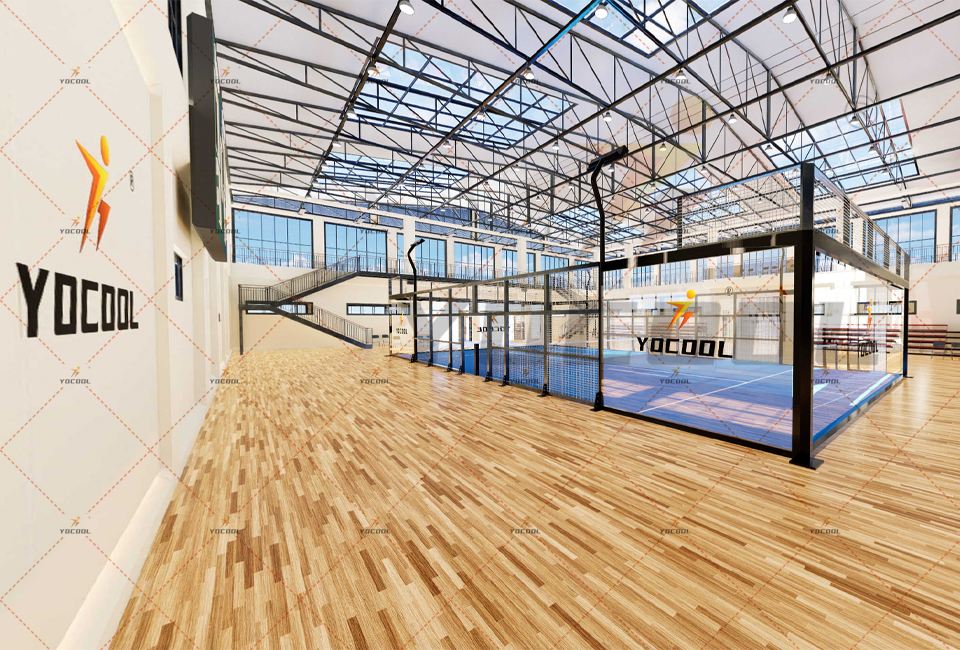

The Rise of Padel Courts in China Embracing a New Sporting Trend
In recent years, the global sports scene has experienced a remarkable transformation, with various sports gaining popularity across different regions. One such sport that has seen a meteoric rise in interest is padel, a racquet sport that combines elements of tennis and squash. Originally rooted in Spain, padel has made its way to China, capturing the attention of sports enthusiasts and recreational players alike. This article explores the installation of padel courts in China and the factors driving this trend.
Understanding Padel
Padel is played in doubles on a court that is about one-third the size of a tennis court. The game is played with solid paddles and a lightweight ball, and it incorporates walls, similar to squash, allowing for unique scoring opportunities. Padel's appeal lies in its accessibility—players of all ages and skill levels can quickly learn the rules, making it an inclusive sport that encourages social interaction and community engagement.
The Growing Popularity of Padel in China
As the Chinese population becomes more health-conscious and interested in fitness, there has been a notable shift towards recreational sports. Padel fits perfectly into this trend. Unlike traditional tennis, padel requires less space, making it ideal for urban environments where land is premium. Furthermore, the social aspect of playing in doubles attracts friends and families, fostering a sense of community around the sport.
The interest in padel has been significantly supported by the growing number of facilities offering dedicated courts. Whether in major cities like Shanghai, Beijing, or Guangzhou, new padel courts are popping up as entrepreneurs and investors recognize the sport's potential. As of late 2023, there are already over a hundred padel courts established across various cities in China, with the numbers expected to grow rapidly in the coming years.
The Installation of Padel Courts

Installing a padel court is a relatively straightforward process, which contributes to its appeal for many investors. Typically, a standard padel court measures 20 meters long by 10 meters wide, enclosed by glass walls on the back and sides. The flooring can be constructed using a variety of materials, with artificial turf being the most popular choice due to its durability and suitability for different weather conditions.
In addition to the physical structure, investing in high-quality lighting and amenities such as seating areas, changing rooms, and snack bars can significantly enhance the overall experience for players. Many installations have also included digital booking systems, allowing players to reserve courts easily, reflecting the growing integration of technology in recreational sports.
Challenges and Opportunities
Despite its rising popularity, the padel scene in China does face some challenges. Awareness of the sport is still limited compared to more established sports like basketball and badminton. Efforts must be made to promote padel through workshops, exhibitions, and partnerships with schools and sports academies.
Another challenge is the competition for space in urban areas, which can hinder the installation of new courts. However, this also presents an opportunity for innovation—multi-functional sports complexes that incorporate padel alongside other sports can attract a wider audience while maximizing the use of limited space.
Conclusion
The installation of padel courts in China marks an exciting chapter in the nation’s sports evolution. With the sport’s ease of learning, social nature, and adaptability to urban settings, it is well-positioned to tap into the growing demand for recreational activities. As more courts are built and the community around padel expands, there is no doubt that padel will continue to gain momentum in China, contributing to a healthier and more active lifestyle for its population. The future of padel in China is promising, and as interest swells, it could very well become a cherished part of the sporting landscape.
High-Performance Industrial Flooring Solutions China Paddle Tennis Court for Sale
High-Performance Industrial Flooring Solutions Durable & Cost-Effective
Homogeneous Transparent Floor – Durable & Stylish Rubber Floor Solutions
Premium Homogeneous Transparent Floor for Durable & Stylish Spaces Rubber Floor Solutions
Premium Sports Floor Solutions Durable PVC Sports Floor & Rubber Floor for Gyms
Durable Rubber Composite Floor Premium Rubber Floor & Mats Solutions